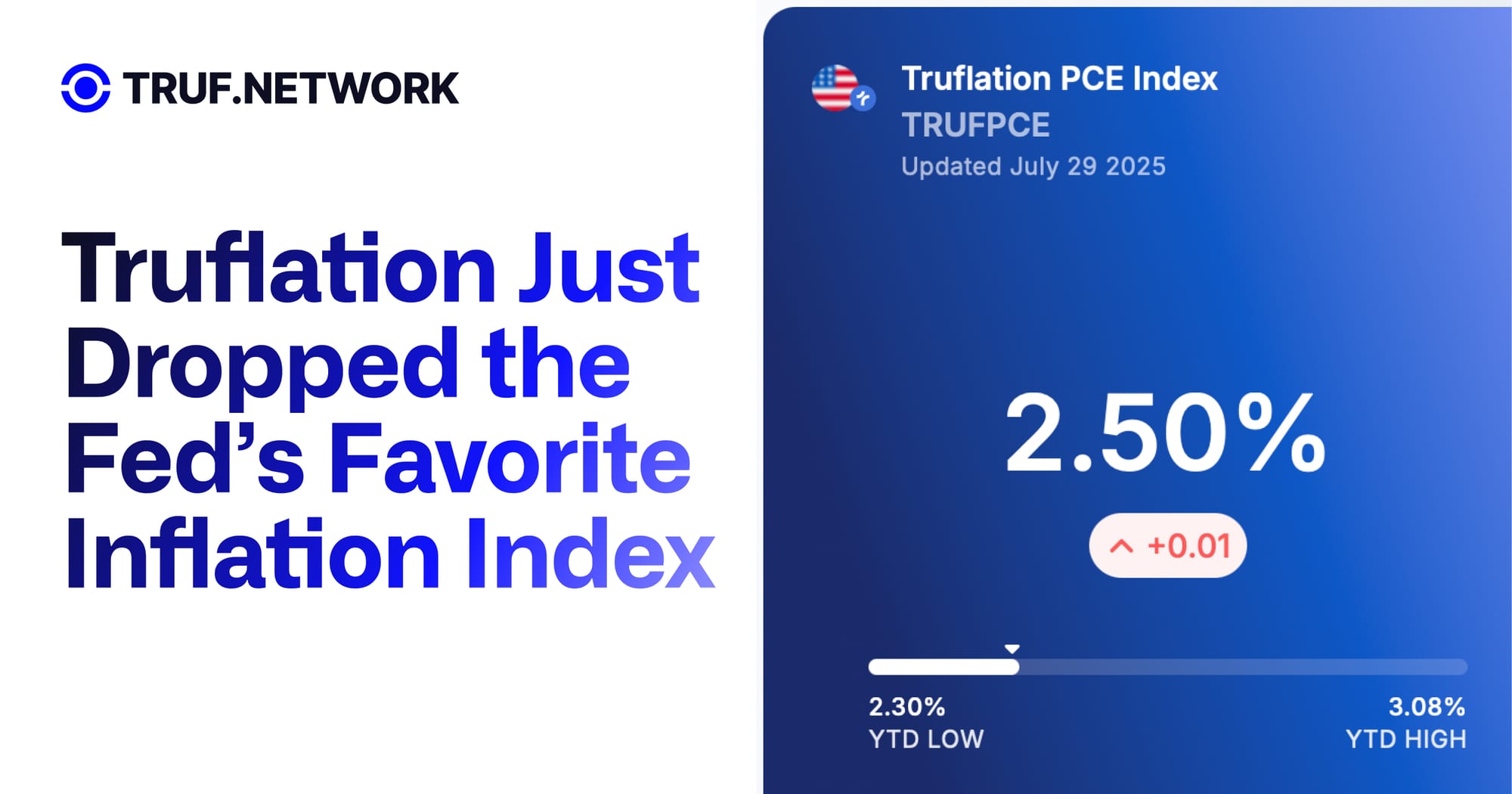Truflation Just Dropped the Fed’s Favorite Inflation Index; On-Chain and Real-Time

While the Fed meets in private and the financial press waits for the next official number drop, Truflation just did something that actually matters: they released a real-time version of the PCE Price Index; the same inflation gauge the Central Bank uses to steer the U.S. economy.
Except this one’s not published once a month.And it’s not based on outdated surveys or backward revisions.It’s live. Transparent. Public.
It runs on TRUF.NETWORK.
Why It Matters
The launch of this index is about replacing the stack behind the scenes, not just matching a government number.Developers and market designers now have access to the underlying structure of the PCE, complete with Fed-aligned categories and weights, but powered by over 100 million live data streams processed in real-time and aggregated from more than 100 different sources.
This gives builders a way to benchmark, model, and price risk using the same framework central banks rely on, but with none of the delays or institutional distortion.
It’s already integrated. It’s already updating. It’s already useful.

What to Build With It
- Markets that price in inflation before the Fed announces it
- Agents that react to live macro conditions, not stale reports
- Instruments pegged to core economic signals, updated daily, not monthly
- Real-time monitoring of macro trends across consumer categories
If you're working on prediction markets, flatcoins, index protocols, or autonomous agents, this is your feed.
What TRUF.NETWORK Powers
The PCE Comparison Index is just one signal. What matters is the mechanism that supports it.
TRUF.NETWORK verifies the data. Anchors the sources. Publishes the result. Truflation is one of many building on it, alongside Nuon, Index.fun, and others. The TRUF token powers that entire flow: from raw data to usable output.
This is what it looks like when open data becomes usable infrastructure.
For Builders and Investors Paying Attention
Every index released like this makes legacy data systems a little less relevant.
If you're building anything that needs to know what’s happening in the economy right now, this is the time to plug in.
